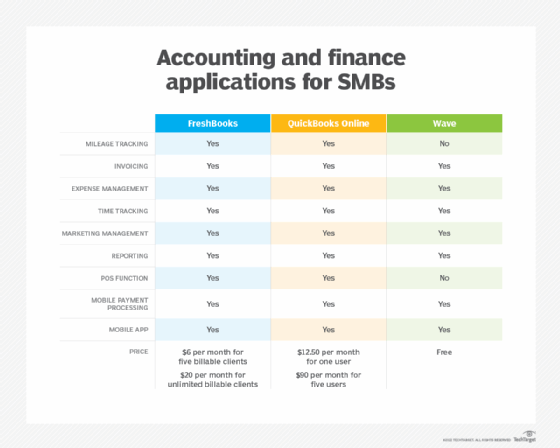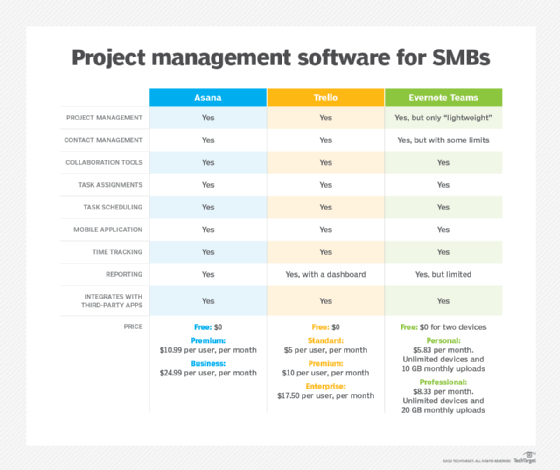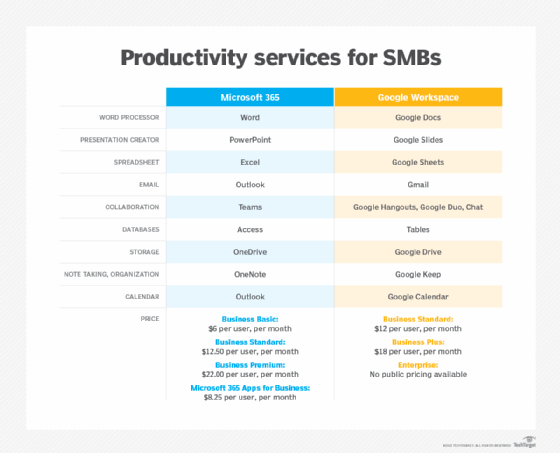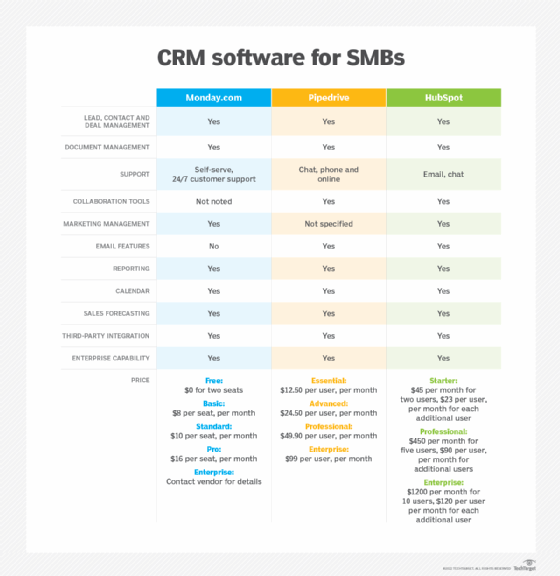Owners of small and medium businesses have a lot on their plate, often with limited resources and technology support, so they must be ready to evaluate software options on their own.
These business-focused software products and tools can increase productivity and minimize the burden of management. SMB owners and workers may need to perform tasks on the move, so it’s good that there is usually a mobile version of these productivity applications.
What types of mobile applications can help SMBs?
These apps are increasing in number and scope, so SMB owners and staff should keep up to date on the latest applications that can improve their workflows and processes. These business applications and software fall within the following five major categories:
The mobile component makes these applications very powerful, especially for a small workforce that may need to communicate information quickly. SMB owners and workers should find the applications that can provide value for their team and learn how each stacks up within the market.
These markets include various software options and licensing models, but SMBs should focus on those that make sense for their organization’s size. Furthermore, SMBs should consider options with solid mobile applications to meet the demands of working from anywhere.
Accounting and finance
All organizations must deal with resources and expenditures — even charities and nonprofits — so they will need accounting software to support those needs. There are plenty of products on the market, but FreshBooks, QuickBooks Online and Wave are well-suited for SMBs (Figure 1).

Several popular mobile apps focus on point-of-sale capabilities. These apps can stand alone and integrate with a larger financial software package. These include Venmo, Square, PayPal, Google Pay and Apple Pay.
Project management and organization
Many products fit the project management category, covering complex tasks that SMBs may need to perform. These tasks include project planning, scheduling, team management, daily plans, note organizers and more (Figure 2).

Asana and Trello are heavier-duty management tools compared to Evernote, which is more of a documentation tool that includes some project management components. Asana and Trello have fundamentally different methods of operation. Each product has free evaluation versions, so organizations can review them before locking into any purchase. Additionally, Evernote’s pricing shows price per month rather than dollars per user per month, so organizations should contact the vendor to verify pricing. All pricing shown is discounted based on annual payment.
Collaboration software
After years of organizations viewing it as helpful but not necessarily essential, collaboration software has new life with the remote work boom that largely began with the COVID-19 pandemic. While many organizations are moving back to the office, there is still value in allowing workers to connect remotely. This software can help remote workers, workers from multiple office locations, traveling workers and many more use cases.
The three core options that SMBs should consider for collaboration are Slack, Microsoft Teams and Zoom. These platforms offer video conferencing, group meetings, private messaging and a mobile application, among other features.
The pricing for these offerings is as follows for SMBs:
- Slack
- Three plans ranging from free to $12.50 per user, per month
- Features vary greatly from plan to plan, including 24/7 support and single sign-on
- Teams
- Four plans — Free, Essentials, Microsoft 365 Business Basic and Microsoft 365 Business Standard. Prices range from free to $12.50 per user, per month
- Improved features with each more expensive licensing model, including more hours of group meetings per month and recorded meetings
- zoom
- Four plans ranging from free to $25 per user, per month
- Escalating features from each plan, including a higher maximum number of meeting attendees and more cloud storage
The features listed above may not be present in all product versions. Additionally, many project management tools have basic collaboration features. A separate license may be redundant with sufficient collaboration features in a different software bundle.
Productivity services
Two major productivity application services are Microsoft 365 productivity applications and Google Workspace.
Offline apps require offline storage and most vendors offer a small amount as part of a suite for free and more capacity for a fee. In addition, offline storage is beneficial for desktop apps to back up to (Figure 3).

For reference, not all applications are equally feature-rich. For example, Google Tables is far behind Microsoft Access’ functionality. On the other hand, the Business Basic plan for Microsoft does not include the desktop versions of the Office applications — only mobile and web apps.
Additionally, these pricing plans are extremely complex regarding feature variance and available bundles.
Free Versions. Microsoft 365 and Google Workspace have free versions, which may be enough for very small businesses with only a few workers.
- Microsoft 365. To access free Microsoft 365 apps go to Office.com and create a Microsoft Account or log in to an existing one. The free versions of these apps are all online and mobile, and while it does include OneDrive storage, some apps such as OneNote are missing, and others, such as Excel, have limited functionality.
- Google Workspace. Users must sign up for or log into a Gmail account and click the matrix of dots labeled Google Apps by the login photo at the top. The Workspace apps will then appear.
Customer relationship management software
CRM systems are typically marketed to enterprise-scale businesses, but there are some options for SMBs. These products can be very helpful for SMBs to support customers with limited resources.
SMB owners and workers can coordinate information for the sales team, including customer profiles, contact information, call tracking and deal tracking. Salesforce, Zoho One and Zendesk are popular enterprise CRM options that can scale down to meet SMB requirements. However, a smaller-scale CRM system could be a better fit for SMBs (Figure 4).

These CRM systems could also eliminate the need to purchase separate applications and services such as finance, collaboration and project management.